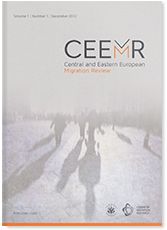The Re-Emergence of European East-West Migration – the Austrian Example
The Re-Emergence of European East-West Migration – the Austrian Example
Author(s): Heinz Fassmann, Ursula Reeger, Josef KohlbacherSubject(s): Social Sciences
Published by: Ośrodek Badań nad Migracjami / Uniwersytet Warszawski
Keywords: East-West migration; push–pull theory; transnational labour market; Austria
Summary/Abstract: Since the fall of the Iron Curtain 25 years ago, the asymmetric Central European labour market that was cut off by different legal systems gradually disappeared and has now been replaced by a unified migration space, where the costs for migration or pendular mobility and the wage gain which migrants can achieve are the decisive factors in the decision of whether to migrate or not. Official statistics show that, over the past ten years, migration from the new member-states of 2004 and 2007 to the EU15 in general and to Austria – a country directly bordering many of the new EU member-states – in particular, has significantly gained in importance. This new East-West migration is characterised by high qualification, a concentration on employment-relevant age groups and high spatial flexibility. Migrants are moving if wage differentials are significant and employment opportunities are given and they return or move further away if the labour market loses its attractiveness. The new East-West migration can provide gains for the target regions, for the regions of departure and for the migrants themselves.
Journal: Central and Eastern European Migration Review
- Issue Year: 3/2014
- Issue No: 2
- Page Range: 39-59
- Page Count: 21
- Language: English

